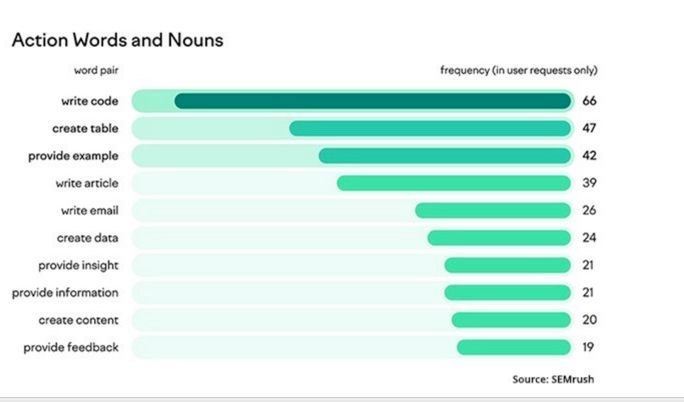Blog
BLOGS

Raquel Bubar, managing director, T Brand Studio (New York Times)
"Audiences are demanding authenticity in their messaging and are cringing at tone-deaf stories. Gone are the days when brands could get away with only talking about themselves, their products or their services. It will be key for advertisers to speak about what matters most to them and how they can improve people’s lives."

From Laurie Sullivan at Media Post ChatGPT Analysis Sheds New Light Into People's Behavior, Intent ___________________________________________________________________________ How people craft prompts to get more information from ChatGPT ranges from simple message lengths to long and elaborate descriptions using action words and nouns, according to an analysis of 5,054 conversations analyzed by Semrush. The company collected publicly shared links of real ChatGPT conversations between May and June, leveraging data provided by global behavior data supplier Datos. The number of interactions users have with chatbots varies quite a bit. While eight is the average number of messages in a ChatGPT conversation, three is the median. The longest conversation in the sample contained 692 messages centered on understanding financial risk management. Although most conversations tend to be short, some users write longer requests. The median message length was 15 words, while the average was 86. About 16% of ChatGPT conversations include links, but only 6% use plug-ins for extended capabilities like search and third-party integrations, which are currently available with a paid ChatGPT Plus account. "Write," "make," "create," and "provide" were the most used words to start a conversation with ChatGPT. Information, data, text, and content were among the most popular actions and nouns requested. Users are leveraging ChatGPT for tasks well beyond content generation. Writing code, creating tables, and providing examples are the top three requested actions, even more common than writing articles or emails. Some 64% of the topics asked ChatGPT to help with programming, followed by social media, information retrieval, business management, and artificial intelligence (AI) and machine learning. The majority of topics focus on enhancing work routines rather than daily activities. Asking ChatGPT to assume professional roles like "lead" or "expert" improves response accuracy and relevance, enabling users to tailor interactions and achieve desired outcomes.











































































































